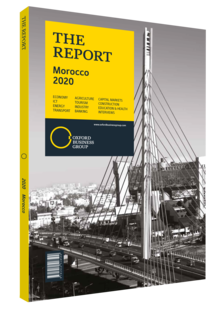Ramses Arroub, CEO, Wafa Insurance: Interview

Interview: Ramses Arroub
How should the market be modernised in order to meet Solvency II standards?
RAMSES ARROUB: The proper functioning of the Solvency II Directive 2009 regulatory standards depends on two main pillars, namely good governance and capital requirements. The implementation of a proper governance scheme is the best protection against any internal business risk. This means creating and relying on supervisory boards, audit committees, well-oiled compliance and risk-management systems, or any other structure enforcing internal control.
A company must also be able to absorb internal or external shocks, such as a drop in the equity or real estate markets, or an increase in the number of claims. In order to do this, meeting the solvency capital requirement is key. Morocco has made substantial progress in this area. The government is planning to release a bulletin covering the issue, and it will either consolidate good practices already put in place by well-structured companies or foster a revamp of governance guidelines of less compliant companies. This will therefore represent a major upgrade of the sector.
In terms of capital requirements, the Insurance and Social Security Supervisory Authority has carried out multiple stress tests and simulations, and is now better able to estimate the level of capital companies need to hedge against the risks to which they are exposed.
What products are expected to disrupt the market?
ARROUB: We are still benefitting from the creation of the life insurance segment. We expect the current penetration rate of 3.7% of GDP to grow rapidly. The success of these products has been such that the country has seen not only companies themselves issue insurance products, but also the rapid development of a reliable distribution network of banks, brokers and agents. In January 2020 new products covering catastrophic events were launched, and they are expected to add around 1% to the market premium. Additionally, the takaful (Islamic insurance) segment will hit the market later in 2020, though it will take some time to reach full maturity. We also launched a funeral insurance product, for which more than 80,000 contracts were sold in 2019 and 300,000 people were covered.
The National Financial Inclusion Strategy, co-led by the central bank and the Ministry of Finance, is probably the most important project we are looking at. The plan will bring about fundamental changes, first and foremost on a regulatory level, adapting and extending distribution channels. Something similar has been done in other African states, where it is now possible to buy insurance products from traditional businesses. This allows operators to reach the entire population, including urban and rural areas. As part of this effort to improve inclusion, we launched a new range of insurance products for low-income customers. These six products – with an annual premium starting at Dh60 ($6.25) per year – provide coverage for areas such as death and medical costs, along with protection against fire and water damage for businesses or housing.
In what ways can insurers minimise their risk of rising car accident claim rates?
ARROUB: Motor insurance is the largest non-life segment of the market and therefore has a serious impact on insurance companies. One of the causes of the problem can be traced to the launch of “compensation without repair” products, which has led to an almost immediate increase in fraud and collusion, which has subsequently contributed to a higher number of claims. However, insurance businesses are in the midst of modifying their offer to tackle the issue at its root. A solution that was recently envisioned but not implemented was a price increase. Taking into account the claim-to-premium ratio, or how much claims cost in relation to the revenue of insurers, we preferred to preserve prices across the market and instead to specifically address claims by rethinking our broader offer.
You have reached the limit of premium articles you can view for free.
Choose from the options below to purchase print or digital editions of our Reports. You can also purchase a website subscription giving you unlimited access to all of our Reports online for 12 months.
If you have already purchased this Report or have a website subscription, please login to continue.

